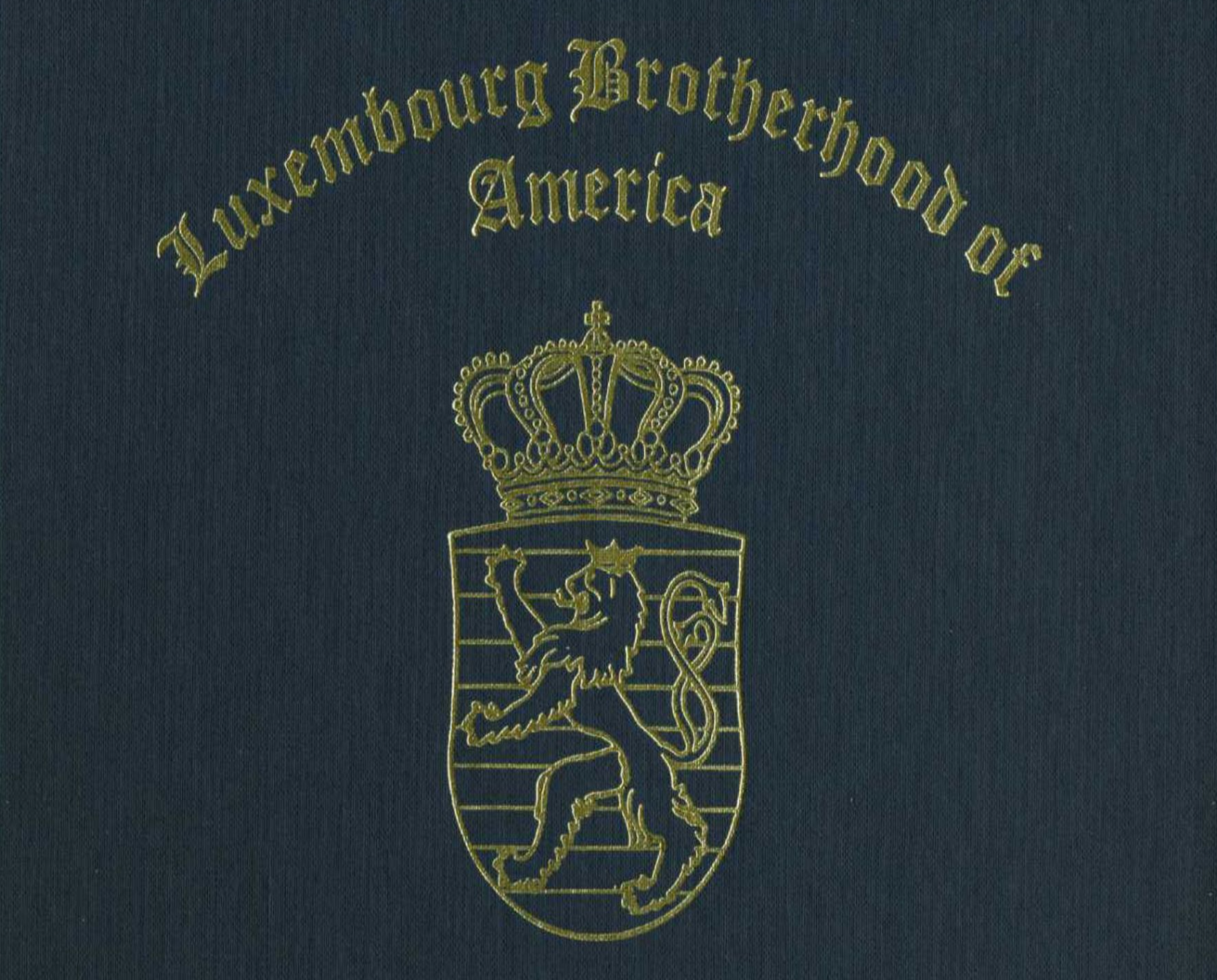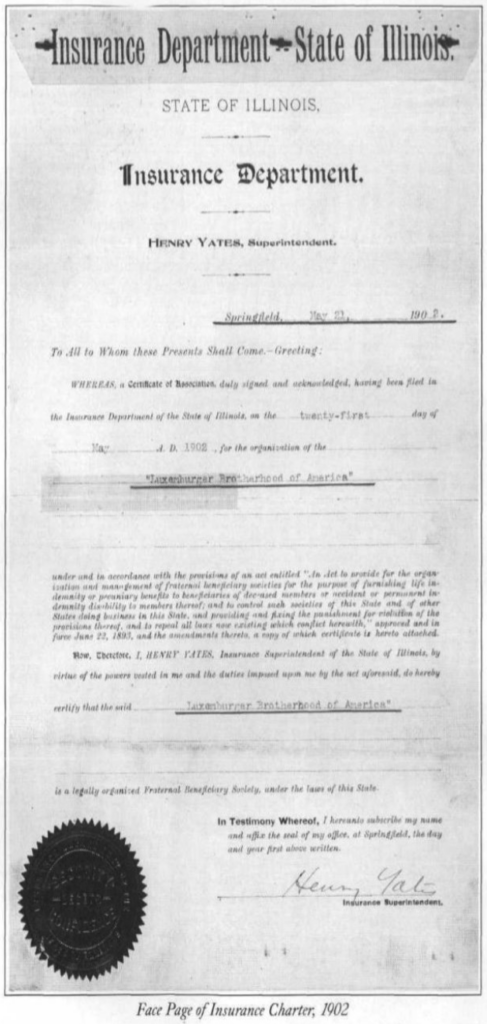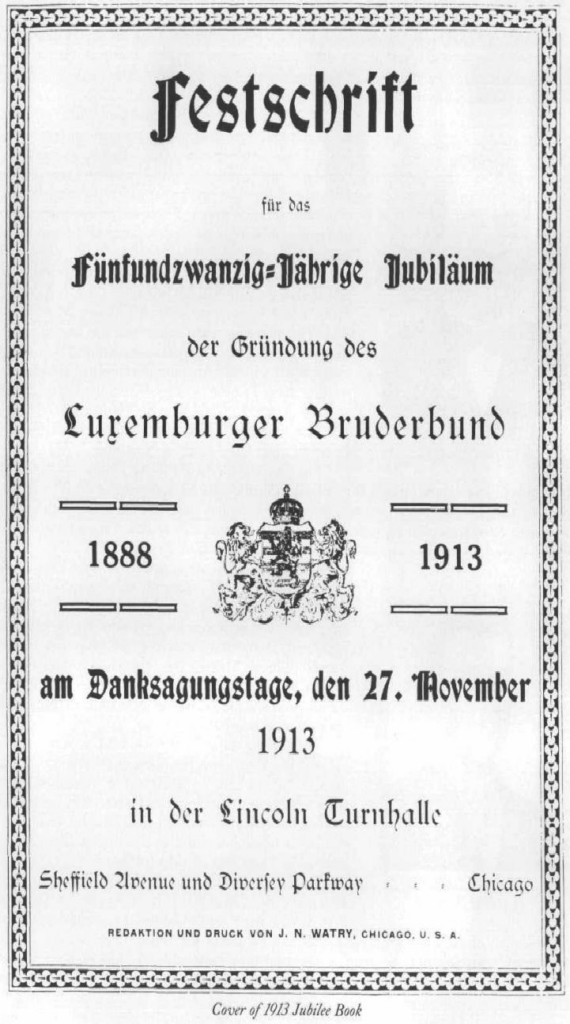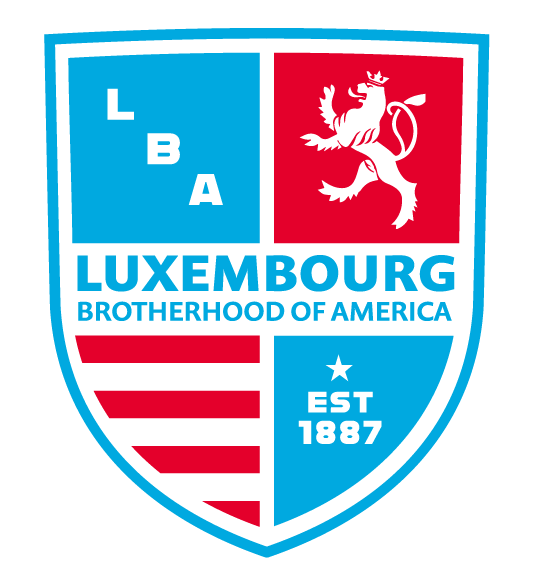Grand Lodge History (1900 – 1920)

1900 – 1920
In January and February 1900, Section 1 initiated fifty-eight new members and Sections 2 and 3 doubled their membership.
On February 14, 1900, the Luxembourg Benefit Society asked to be admitted as a group into the L.B.A. This request was granted, and the group became known as Section 4. The former Luxembourg National Benefit Society of Town Lake (north side of Chicago) was admitted as Section 5, on September 9, 1900. On September 30, 1900, a group from Hawthorne became known as Section 6, and on October 7, 1900, Aurora was admitted as Section 7, with Peter Weiland as its first president.
On February 23, 1902, forty-three members were initiated, and officers were installed into the newly organized Section 8 located in Evanston, Illinois. On March 16, 1902, 21 candidates were initiated, and officers were installed to form Section 9 in the Lakeview area of Chicago. With the establishment of these new sections, membership of the L.B.A. reached the 500 marks. With 500 members, the L.B.A. qualified as an insurance organization, which permitted it to pay sick and death benefits. A review of the insurance charter dated May 21, 1902, shows the name of the organization to be “Luxembourger Brotherhood of America’. The incorporators were listed as Nicholas Mausen, Bernard Metzel, John N. Watry, Nicholas Nilles, Nickolas Gans, John P. Michels, Bernard Prost, John P. Schommer, Theodore Abens, Charles J. Lemmer, John P. Kohn, Bernard, Klein, Peter Flamming and Jacob Schaack.

On February 23, 1902, forty-three members were initiated, and officers were installed into the newly organized Section 8 located in Evanston, Illinois. On March 16, 1902, 21 candidates were initiated, and officers were installed to form Section 9 in the Lakeview area of Chicago. With the establishment of these new sections, membership of the L.B.A. reached the 500 marks. With 500 members, the L.B.A. qualified as an insurance organization, which permitted it to pay sick and death benefits. A review of the insurance charter dated May 21, 1902, shows the name of the organization to be “Luxembourger Brotherhood of America’. The incorporators were listed as Nicholas Mausen, Bernard Metzel, John N. Watry, Nicholas Nilles, Nickolas Gans, John P. Michels, Bernard Prost, John P. Schommer, Theodore Abens, Charles J. Lemmer, John P. Kohn, Bernard, Klein, Peter Flamming and Jacob Schaack.
The object for which the L.B.A. was incorporated as an insurance corporation was: “to provide for the payment of benefits in case of disability and death or of either, resulting from disease, accident or old age of its members: provided the period in life at which payment of physical disability benefits on account of age shall commence, shall not be under 70 years of age.”
The plan to be used to implement the insurance program was the: “lodge system with a ritualistic form of work and representative form of government. The supreme governing, managing, and legislative body shall be known as the “Grossbund” (or Grand Lodge) and shall be composed of the elective officers of the “Grossbund’ and delegates. The number of delegates to be elected shall be fixed from time to time by the “Grossbund” and shall be more than the number of elective officers of the “Grossbund.” The ”Grossbund” shall have the power to make a constitution and by-laws for the government of the corporation, and to amend and alter the same and to provide for the payment of funds for the payment of benefits and expenses by dues, assessments, per capita tax, etc. collected from members.”
At the Grand Lodge meeting held in 1900, a Grand Vice President was elected from each Section. In 1902, at the Grand Lodge meeting held May 11, this procedure was abandoned in favor of electing one Grand Vice President. The remaining Grand Vice-Presidents were replaced by Grand Representatives.


The Seventh Annual Convention was held in Chicago on February l, 1903. At that meeting, it was determined that the L.B.A., to grow and increase its influence in Luxembourg affairs, generally, should establish sections in states other than Illinois. After establishing Section 10 in West Pullman (South Side of Chicago), Section 2 was established in Granville, Iowa on June 7, 1903. Twenty-six charter members, led by George Wagner, John Ries, and Dominick Berg were initiated.
At the Eighth Annual Convention held in Aurora, Illinois, Grand President John N. Watry resigned, and Peter Weiland succeeded him. Two new sections were formed. No. 12 in Random Lake, WI., on October 27, 1904, under the guidance of Frank Wagner and Section 13 in Milwaukee. The year 1905, was a very successful one for the L.B.A. under the Grand Presidency of Matt Huss. Sections 14 through 19 were added to the Grand Lodge. Section 14 was begun in Remsen, Iowa, on May 1st, 1905, under the leadership of J.P. Kieffer and Michael Treinen. Twenty-seven charter members were inducted into the L.B.A. Section 15 was started in Niles Center, IL, n/k/a Skokie, on July 2, 1905. Under the leader ship of Joseph Hohs, twenty-one charter members were initiated into the L.B.A. Section 15 is still in existence and supports the activities of the Grand Lodge today.
Section 16 was organized on July 17, 1905, in Escanaba, Michigan, and Section 17 was started on the southwest side of Chicago on July 9, 1905. Section 18 was begun in Lemont, Illinois and Section 19 was started in Vandergrift, Pennsylvania on July 30, 1905. The Tenth Annual Convention was held in Chicago, on February 11, 1906. It was noted that 350 new members were initiated into the Grand Lodge during the previous year for a total of 1,186 members. A new Section 20 was organized in Dubuque, Iowa.
The Eleventh Grand Lodge Convention was held in Chicago, on February 3, 1907. Mr. Joseph Eischen formed Section 21, at Gross Point, Illinois, n/k/a Wilmette, on May 21, 1907. Mr. J.P. Kieffer is credited with organizing Section 22 in Hospers, Iowa on December 22, 1907. The formation of Section 22 established the fourth section of the L.B.A. in the State of Iowa.


The 12th Annual L.B.A. Convention was held in Chicago under the auspices of Section 3, whose members served a banquet for the assembled guests. In 1908, Portland, Oregon was admitted as Section 23, and Section 24 was organized in New York, N.Y. Because these Sections were quite a distance from Chicago, they disbanded in 1912. On May 2, 1909, the 13th Annual Convention was held in Milwaukee, WI. The membership numbered 1,485, There were no new sections formed at this time. On May 1 & 2, 1910, the 14th Convention was held in Dubuque, Iowa. The day started with a parade, followed by a solemn church service. There was no important business transacted so the convention adjourned at noon on the second day.
Tess Ville, Illinois, now known as Lincolnwood, was admitted as the 25th and last Section of the L.B.A. at the 15th Annual Convention held in Chicago, May 7-8th, 1911. The following year a convention was scheduled for Remsen, Iowa, but due to poor transportation, the meeting was moved to Chicago. Membership numbered 1,642. The treasury showed a balance of $17,477.84 plus section funds amounting to $45,351.30. John M. Manger, Grand Vice President of Section 17 succeeded Matthew Huss as Grand President upon Huss’ death on November 3, 1912.
Plans were made for the Silver Jubilee, which was to be held in Chicago, at the Lincoln Turner Hall on Sheffield Parkway, on November 27, 1913. At the May 4th Convention, Henry Geimer, a member of Section 8, was elected as the Seventh Grand President. Speeches and music were presented at the Jubilee Celebration and a souvenir book was published, listing the history of the sections, and of the Grand Lodge.


Recent Comments